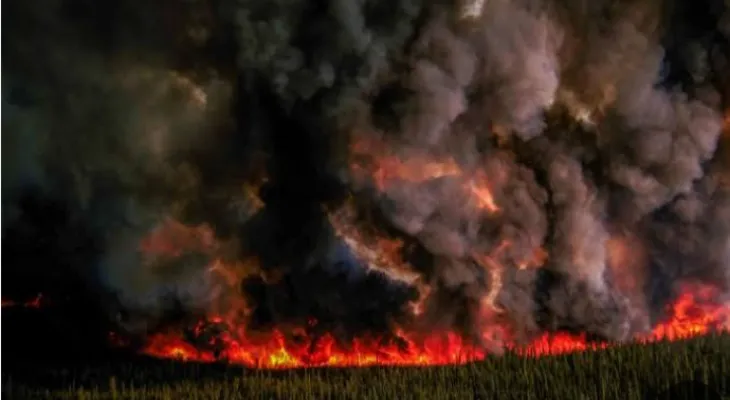Search here
Newspaper
Search here

Arab Canada News
News

Published: July 21, 2024
Canadian authorities announced yesterday, Saturday, that the wildfire in northeastern Canada, which forced more than 9,000 people to evacuate their homes a week ago, is now under control, allowing residents to begin returning home.
Newfoundland and Labrador Premier Andrew Furey told reporters that the danger to the towns of Labrador City and Wabush is now "very low."
He said, "We are breathing a sigh of relief here again," adding, "As a result, we are in a position to partially lift the evacuation order," which he described as "the largest evacuation in the province's history."
For the time being, only essential workers, such as hospital staff, supermarket employees, and government workers, will be allowed to return to prepare for the residents’ return starting Monday, according to Furey.
The evacuation process was difficult. Residents of this remote area had to travel 500 kilometers to reach safe locations via the only available road.
While the situation is improving in eastern Canada, the west of the country has seen more wildfires flare up in recent days.
More than 320 wildfires are currently burning in British Columbia on the Pacific coast, including three particularly large fires. Several thousand people are still on standby to leave if necessary.
In Alberta, evacuation orders have been issued for more than 5,000 people from isolated Indigenous communities as the uncontrolled fires threaten the only road leading to their areas, according to officials.
The federal Environment Ministry has issued several warnings about air pollution caused by smoke in the Rockies and the north, which has affected Edmonton, the second-largest city in the province.
Authorities say a mix of thunderstorms and extreme heat ranging from 30 to 40 degrees Celsius has caused the fires, conditions that may persist for several more days.
Climate change is considered one of the main reasons for the increased risk of massive fires in recent years, according to experts.
Comments